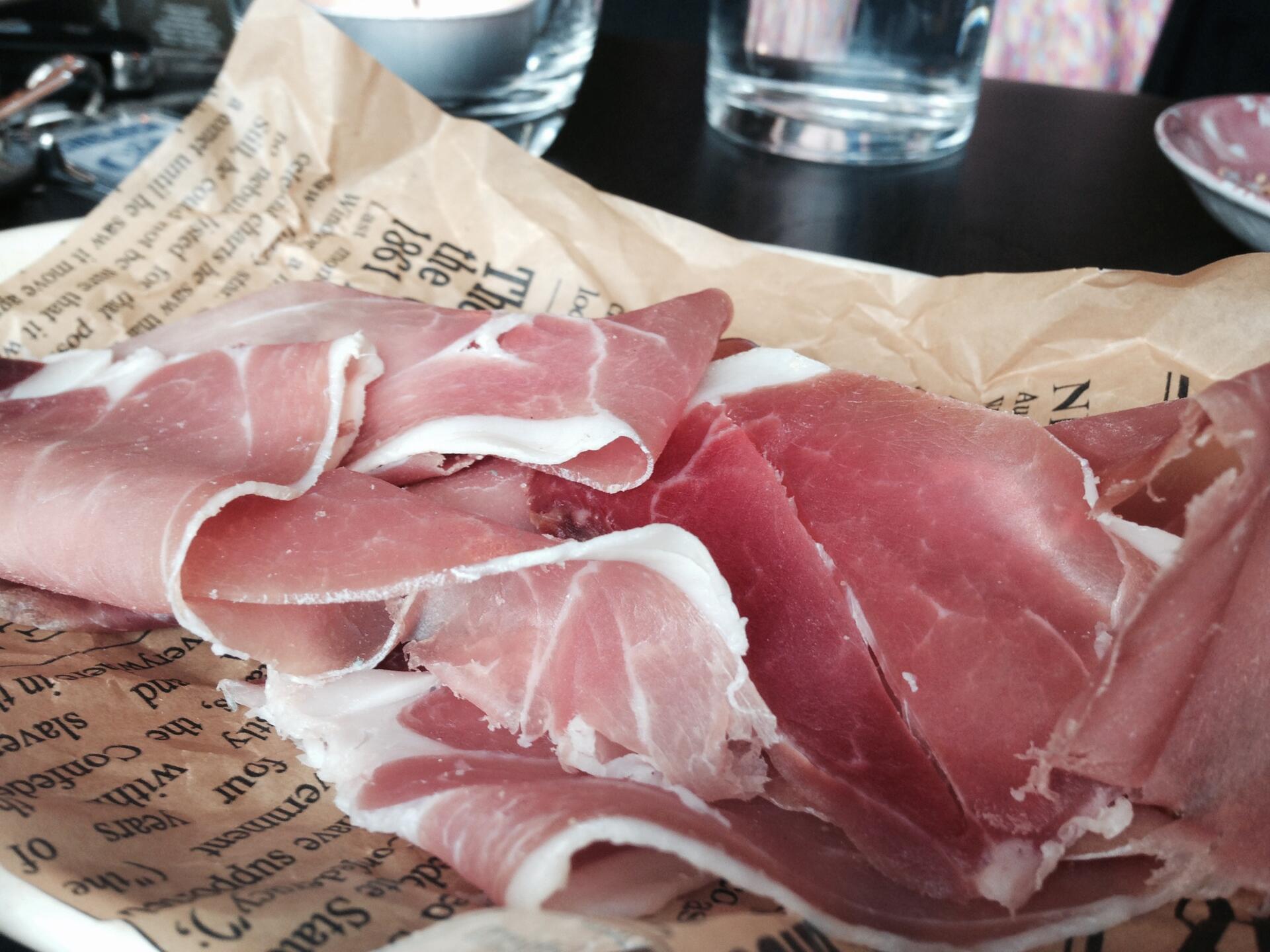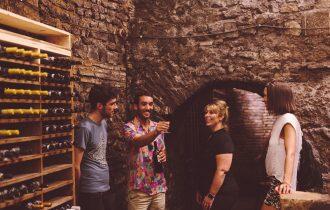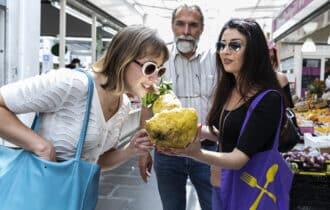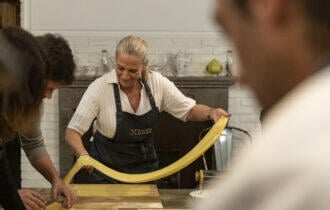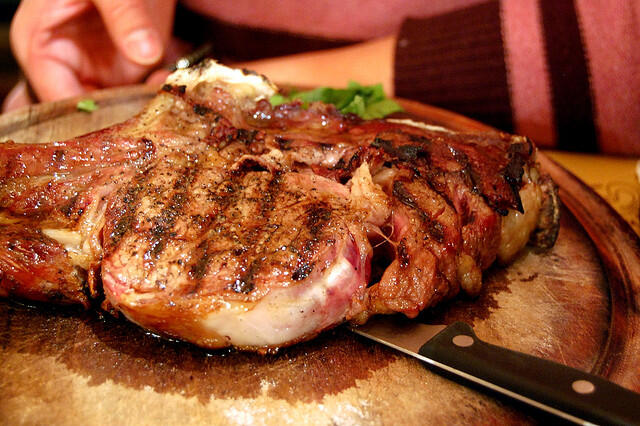Prosciutto is one of the world’s favourite and best-known Italian foods. The history of this cured ham stretches back to pre-Roman times. In northern Italy, in San Daniele, it was the Celtic people who first began curing meat with salt, and in Parma it was the peasants. The traditional process of curing is still practiced like an art form in both of these cities and results in the delicious prosciutto that, when thinly sliced, simply melts in your mouth.
How Is Prosciutto Made?
The word prosciutto comes from the Latin pro (meaning before) and exsuctus (meaning to suck out [the moisture]). And sucking out the moisture is one of the first steps in the process of making savoury prosciutto. The legs are covered with salt and pressed to remove the excess moisture. After about four months the salt is rinsed from the legs, which are then hung to dry. The curing process requires that the legs are hung in a cool room with good ventilation and a proper balance of humidity. The hams can hang curing upwards from one to two years.
Where Is Prosciutto Made Best?
Parma, in Emilia-Romagna, and San Daniele, in Friuli-Venezia Giulia, are the two cities that have cured prosciutto the longest. Because of this history, prosciutto di Parma and prosciutto di San Daniele are the most famous in Italy and beyond. But other cities and regions also cure some tasty prosciutto, like Norcia, a town well-known for its pork products.
When you’re choosing a prosciutto in the shop, be sure to look for the Protected Designations of Origin (PDO or DOP in Italian). This is a standard that guarantees that prosciutto is made with the healthiest pigs, and that the curing process does not involve additives like nitrates, which are sometimes used to get the pink colour of the finished product.
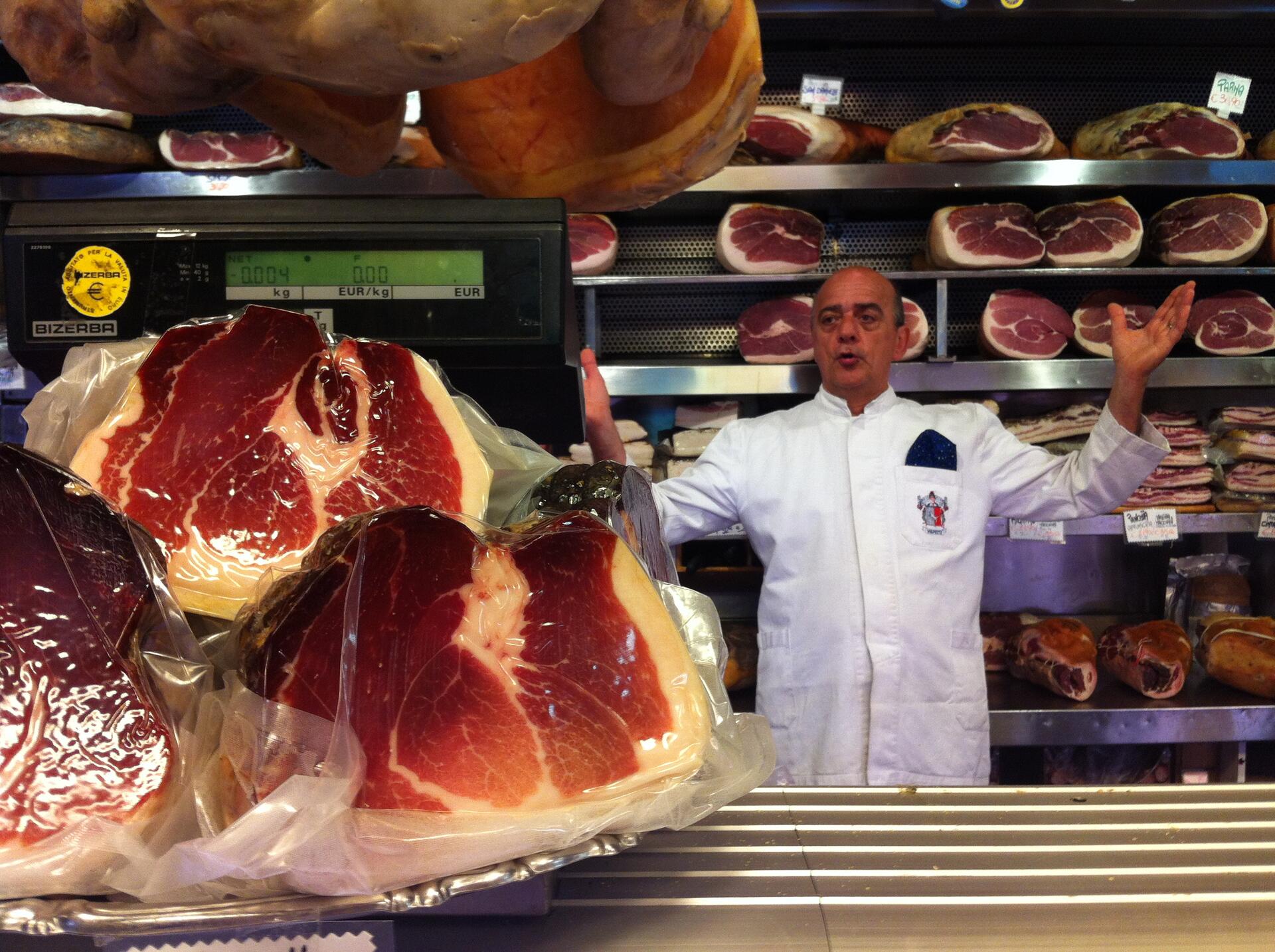
How to Eat Prosciutto?
So now that you know what prosciutto to ask for, you should also know the best way to eat it. Because the best prosciutto doesn’t have any additives, it should always be sliced from the leg on the spot. (Even though it might be convenient, stay away from pre-sliced prosciutto.) As for the thinness or thickness of the slicing, it’s a matter of taste. Best of all the slicings though is hand-sliced, which allows the complexity of sweet and salty flavours to really stand out.
The best way to eat prosciutto is out of the paper that the alimentari sliced it into. Or pair it with mozzarella di bufala or some slices of melon for a snack or as an appetiser. Another delicious way to eat prosciutto is between pieces of bread, a panino.
Where in Rome can you Buy It?
There are plenty of places in Rome to buy some of the best prosciutto in Italy. Of course you can stop in at your neighbourhood deli that usually will have some standard and delicious legs, but if you’re looking for something special head to any one of these alimentari on this list:
- Antica Caciara in Trastevere
Via di San Francesco a Ripa, 140
This alimentari is a long-time Trastevere standby—it’s been around for 100 years! And besides from offering local cheeses, Roberto, the man who has ran the place for 50 years, can guide you through their fine choices of prosciutto. - Franchi in Prati
Via Cola di Rienzo, 204
If you’re visiting the Vatican and are looking for a good midday meal, head over to Franchi and the fabulous choices at their deli counter. Join the crowds in getting a prosciutto sandwich to go. - Lina and Enzo at the Testaccio Market
At Lina and Enzo’s stand in the Testaccio Market you can find the couple hand slicing prosciutto from Norcia, where Enzo learned how to slice when he was a boy. Buy an etto (or 100 grams) and a ball of fresh mozzarella di bufala for a fresh lunch. - Volpetti in Testaccio
Via Marmorata, 47
This is the place to visit for the finest prosciutto. The cheerful men behind the counter will help you find just what you’re looking for.
Looking to try all the best food in Rome? Check out our tours and soak up the history and culture while tasting the best food Rome has to offer!
This post was originally published on January 27, 2014.

